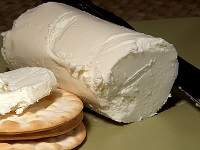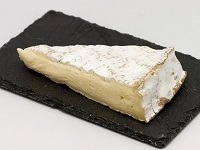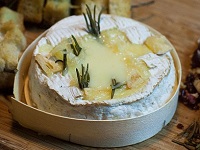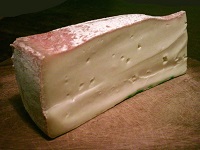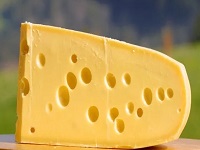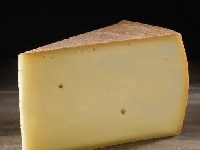Riesling (Austria)
Austria has a reputation for making excellent Rieslings.
Riesling Flavors
Lemon |
Lime |
Apple |
Pear |
Peach |
Nectarine |
Apricot |
Flowers |
Herbs |
Steel |
Minerals |
Petroleum |
The Riesling grape is super aromatic.
Citrus, apple, and white fruit flavors are typical for Riesling. Hints of flowers, herbs, and steely minerals.
Warmer climates can add more peach and apricot notes.
Riesling Profile
Dry Riesling is fresh and fruity, almost perfumed.
The high acidity balances the sweetness (residual sugar).
| SUGAR: | Dry (3 g/l) |
| BODY: | Light |
| FRUIT: | Medium |
| ACIDITY: | High |
| ACCOHOL: | 11-13% ABV |
| Serving temperature: 8-10°C (46-50°F) | |
Riesling Food Pairing
Riesling is very food friendly. It pairs best with Seafood, Chicken, and Vegetables:
Fish |
Seafood |
Shrimps |
Sushi |
Salmon |
Chicken |
Turkey |
Pork |
Salads |
Vegetables |
Asparagus |
Soft Cheese |
Excellent Pairings
Seafood. Shellfish. Shrimps. Clams.
Fried Fish. Lemon based Sauces.
Sashimi. Sushi. Nori Rolls. Gravlax.
Roasted Chicken. Chicken Wings.
Lightly Smoked Meat. Pork. Ham. Turkey.
Alsatian Specialities
Flammkuchen (White Pizza).
Roast Pork with Mustard Sauce.
The Ideal Glass for Riesling
A Riesling Glass has a tall and narrow bowl to emphasize the aromas of the wine.
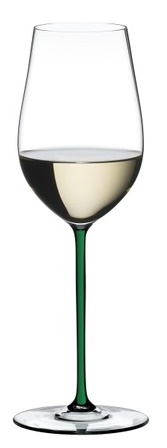
|
The shape also helps balance the high acidity often found in Riesling.
The Riesling glass is perfect for any bone dry wines with high acidity like Chablis, Chenin Blanc, Picpoul and Vinho Verde. |
Riesling Cheese Pairing
Pairing Tips
Opt for cheeses with moderate saltiness and creaminess to balance the c's acidity.
Also try to add fresh fruits (grapes, apples, pears), nuts (almonds, walnuts), and a light drizzle of honey to enhance the pairing experiment.
Fresh and Mild Cheeses
Ricotta: Especially good if served with a drizzle of honey or fresh fruits.
Goat Cheese (Chèvre): The tanginess complements the subtle fruit notes found in Riesling.
Soft Cheeses
Brie: The creamy texture and mild flavor work beautifully with c.
Camembert: Similar to Brie but with slightly more earthy.
Fontina: Its nutty, buttery qualities make a good match.
Semi-Soft Cheeses
Gruyère: Mildly nutty and sweet, enhancing the a subtile Riesling.
Swiss Cheese: Riesling has a refreshing acidity and floral aromas, which complement the nutty and slightly sweet flavors of a Swiss Chese.
Asiago: Lightly aged Asiago adds a complementary tang.
If You Like Riesling
You May Also Like:
About Riesling
Riesling thrives best in cool climates, where it can ripe into the late fall. In hot climates, Riesling generally loses its fine, delicate flavors.
Riesling is in many ways opposite to Chardonnay. Good Riesling is fresh and sour with medium fullness, moderate alcohol, delicate aromas, and no oak.
To appreciate Riesling, a certain tolerance for acid should be worked up. Riesling has a much more exciting aroma profile than Chadonnay, and it also possesses great elegance and finesse.
Dry Riesling is primarily a food wine. Alone, the wines may seem a little sour.
The best Rieslinges come from Germany, Alsace in France, Austria, Northern Italy, Australia, and New Zealand.
You can read more about Riesling world wide at Riesling Regions.
Riesling in Italy
The best Italian Rieslings come from the North.
High Quality areas / regions:
- Trentino
- Alto-Adige
Riesling in Austria
The Riesling production in Austria is quite small, but Austria has a perfect climate and a good reputation for making excellent Rieslings.
High Quality areas / regions:
- Wachau
- Kamptal

